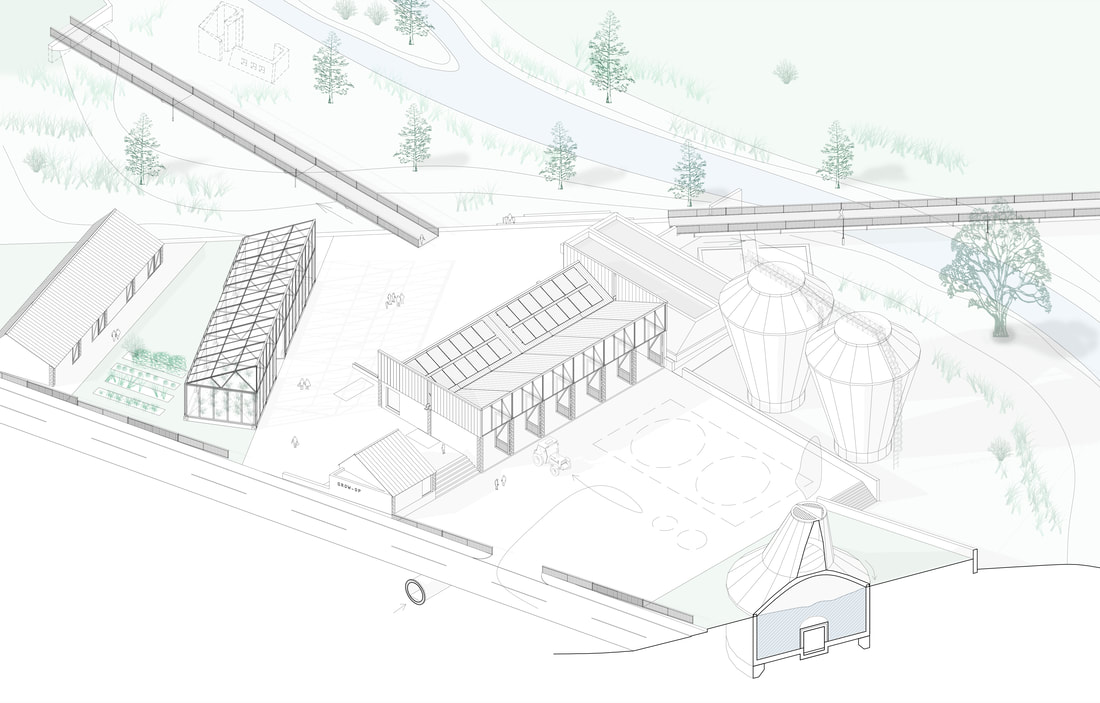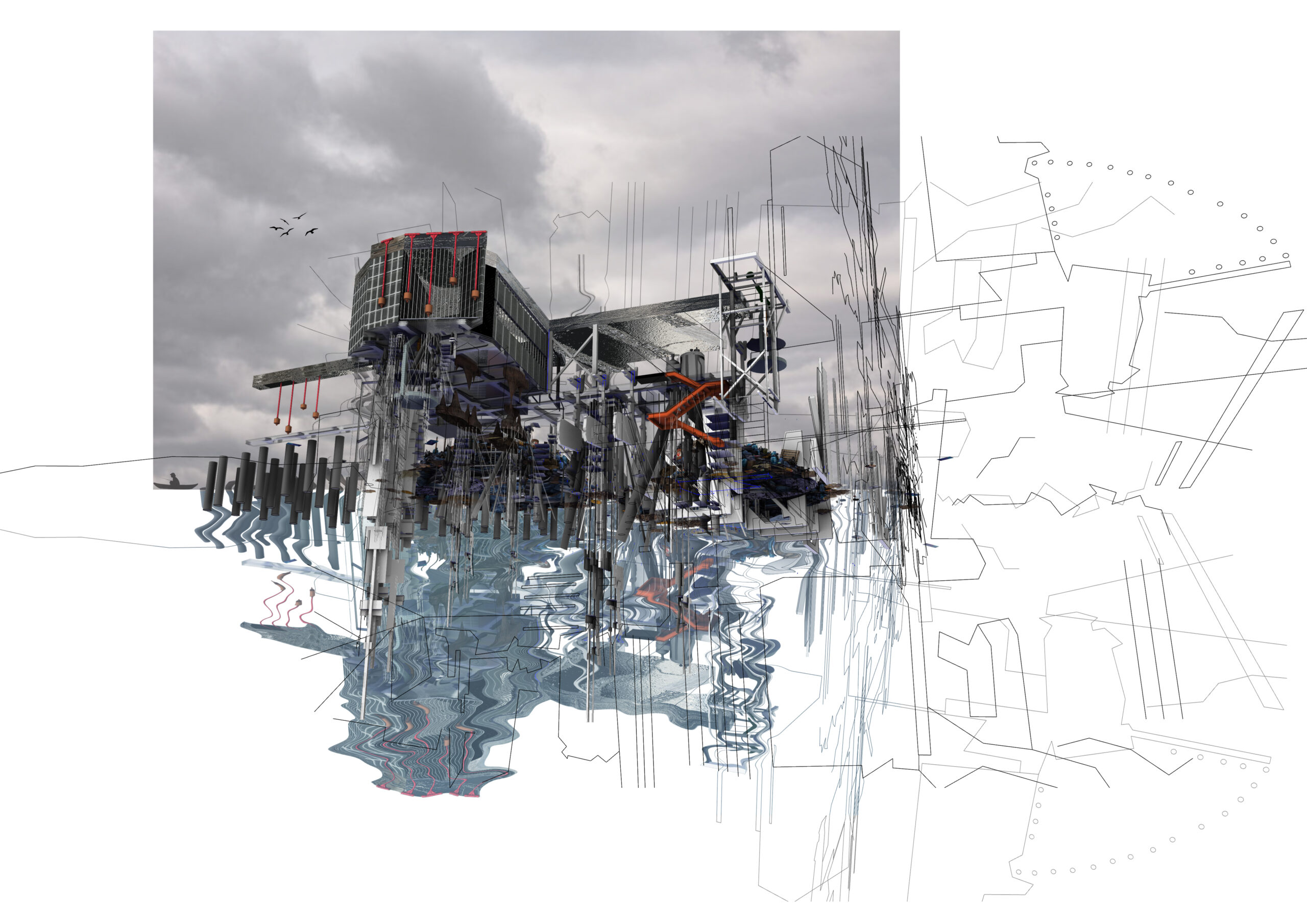
A project exploring a landscape of waste water treatment for the town of Callan. With one of Ireland’s most polluted rivers (through agricultural runoff) and a wastewater treatment plant limiting future housing capacity, an urgent infrastructural opportunity has arisen in this rural Kilkenny Town. A 17km network of riparian buffer zones was designed along the King’s River. Culminating in a new waste water treatment park within the town boundary.
Using more ecologically sensitive, natural processes to treat the wastewater allows it to be recycled into fertilizer. This is presented back to farmers in a ‘grow-op’ and can be used across their fields in compensation for lands given over to the riparian buffer scheme. Meanwhile the people of the town are given a river parkland and community greenhouse.
Architecturally the treatment plant must carefully balance these potentially conflicting needs of all stakeholders, and allow them to safely co-exist and thrive. It also borrows a material language from vernacular agriculture, with steel frames and concrete pads deemed necessary for a place of such civic importance, a cathedral of water.
The project challenges the conventional fortification of public infrastructure and allows the town to architecturally and socially engage with the river for the first time in its post colonial era. Giving the people collective agency in managing their own environment, making them custodians of the landscape.

This thesis proposes islands as a purgatory. By applying Dante’s journey through purgatory in The Divine Comedy, this thesis proposes the island as a site to visualise modern punishment in a reformed way. Like purgatory, islands are places for the individual to be on a special furlough on earth for a short amount of time. The vicious circle of humanity is being achieved. The thesis identifies three sins of Dante. Situated on the West Coast of Ireland (a place rich in afterlife mythology), and adjacent to the Aran Islands, the islands recontextualise three sins mentioned by Dante (Avarice, Gluttony, and Pride) into a contemporary phenomenon and problem with excessive consumption and material way. The sins are experienced as three new island settings.
The journey through the first island of Avarice is motivated by the human experiential transition from greed to generosity. The second island of Gluttony addresses the sin by visualising the mouth as the conveyor of food and poetry. Hence, the proposal of a culinary/poetry studio that also collects and filters waste. The architecture on the third island addresses the proud souls and waste as exhibition. Through exploring, surveying and drawing the island’s ground fabric, new proposals emerged.
Each island has elements of recompositing found objects at new scales in them. The three islands will become a journey during which the individual reflects on past indulgences and makes amends to the behaviour. They operate between conceptual, literary and environmental concerns. The project develops technology to address the environmental issues of open waters. Each island filters waste. The juxtaposition between waste as pollution and waste as a design piece creates a heterotopic atmosphere. This blurs the line between what is hidden in waste and how it becomes architecture.
‘Waste is the inevitable entropic outcome of what we call progress.’
This reveal influenced the design of the proposals. By placing the thesis in a contemporary context, the modern sin of waste will be investigated. The thesis plays on the likeness between the circularity of Dante’s circles of hell and the circularity of reuse. A path to damnation is not being proposed in this thesis. It proposes a path to a place of renewal and self-renovation.

